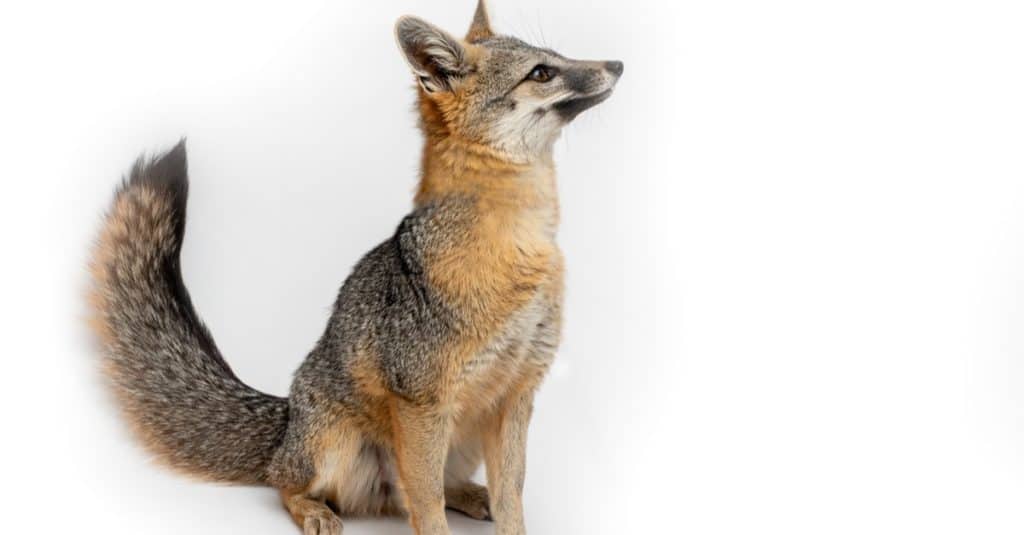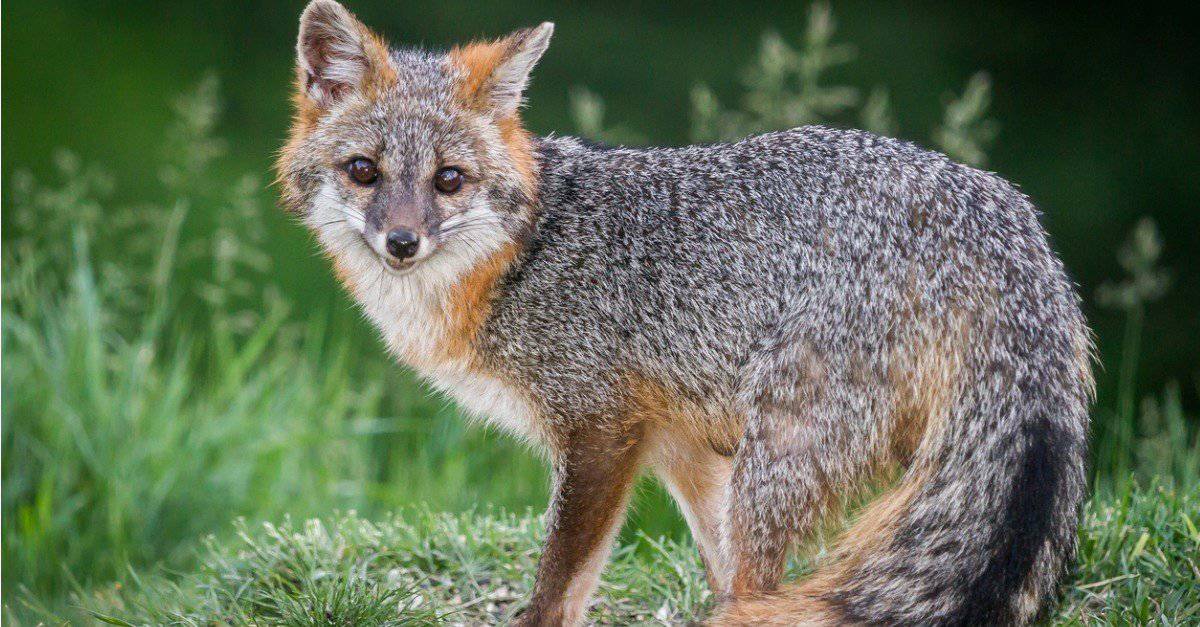Kentucky is known for its diverse wildlife, including a variety of native species thriving in its forests, wetlands, and grasslands. One of the most fascinating animals found in Kentucky is the fox. These intelligent and elusive creatures are found throughout the state, with two specific types calling Kentucky home. In this article, we explore these two types of foxes and take a closer look at where they live, what they eat, and how they have adapted to their environments. Join us on a journey to discover the fascinating world of Kentucky’s foxes!
The Gray Fox

Gray foxes live in North America, including the state of Kentucky.
©JayPierstorff/Shutterstock.com
The gray fox (Urocyon cinereoargenteus) is one of the two types of foxes found in Kentucky. They are an omnivorous mammal that belongs to the Canidae family. They can grow up to 47 inches in length and weigh around 7-13 pounds. Compared to the red fox, the gray fox is smaller and more reclusive, making them harder to spot.
Gray fox populations in Kentucky have been decreasing, which has prompted researchers to examine the reasons behind this decline. Gray foxes tend to prefer areas where they can find cover and prey on small mammals and birds.
The gray fox can be found in Kentucky in a variety of habitats, including forested areas, woodlands, and old fields. They are widespread throughout the state, but they are less likely to be seen than the red fox. Some counties in Kentucky where gray foxes have been observed include Barren County, Henderson County, and Christian County.
The Red Fox

The red fox is one of two types of foxes that can be found in Kentucky.
©Ondrej Prosicky/Shutterstock.com
The red fox (Vulpes vulpes) is the other of the two types of foxes found in Kentucky. They are the largest true foxes and can reach a maximum running speed of 30 mph. The red fox has scent glands that give them a strong odor which they use to mark their territory. They are known to be intelligent and curious animals and have adapted well to human presence.
In Kentucky, red foxes are often observed foraging in farmlands and can be found in a variety of habitats, including grasslands, woodlands, and urban areas. They are distributed throughout the state and are common in many Kentucky counties.
Summary Of Similarities and Differences Between Gray and Red Foxes
Here is a summary of the similarities and differences between gray and red foxes:
Similarities:
- Gray and red foxes are both species of foxes found in North America.
- Both species eat small mammals, birds, and other similar prey.
- They can live in a variety of habitats, including forests, grasslands, and suburban areas.
- Gray and red foxes are both members of the Canidae family and have similar physical characteristics.
Differences:
- Red foxes are generally larger and more brightly colored than gray foxes, with reddish-orange fur and black legs, ears, and backs.
- Gray foxes have shorter legs and a more rounded face than red foxes and are typically gray or brown with black-tipped tails.
- Red foxes are more adaptable to urban and suburban areas than gray foxes.
- Gray foxes are more arboreal than red foxes and can climb trees better.
- Red foxes are considered more aggressive and dominant than gray foxes.
- Gray foxes are known to have a more varied diet than red foxes and will eat fruit and insects in addition to meat.
The Role of Foxes in Kentucky Ecosystems: Impact on Prey and Predator Species
Foxes are one of many predator species that can impact ecosystems and prey populations in Kentucky. For example, one resource from the USDA APHIS mentions foxes as a predator that can pose a threat to livestock and highlights the importance of managing predator-livestock interactions. While these resources do not provide a full picture of the specific role of foxes in Kentucky ecosystems, they can help to inform our understanding of the potential impact of fox populations on other species within the food chain.
Here Are Different Ways Foxes Can Impact Livestock on Farmlands:
One article from USDA APHIS suggests that predators, including foxes, can pose a threat to livestock. They could prey on young animals, including lambs, kids, and poultry, causing economic losses for farmers and ranchers. Predators such as foxes can also damage properties, equipment, and crops during an attack.
One study suggests that foxes were responsible for at least some of the lamb predation in the study area. The study shows that preventative measures could reduce predation by up to 65%, which could be helpful for farmers wishing to prevent losses to livestock from fox predation.
Overall, while foxes can play an important role in regulating prey populations in ecosystems, they can also have a significant impact on livestock in farmland areas. It’s essential for farmers and ranchers to take steps to protect their livestock from such predators to reduce economic losses and ensure the sustainability of their farms.
Kentucky Fox Populations: Current Status and Conservation Efforts
There is no clear indication that foxes in Kentucky are an endangered or threatened species. There is no mention of foxes being listed as threatened or endangered on state or federal lists. However, it is important to note that there may be local populations that are at risk due to habitat loss or other factors. It is always recommended to check with state or local wildlife agencies for more information on specific populations or conservation efforts targeting foxes in Kentucky.
Conservation organizations such as The Nature Conservancy and Southern Conservation Corp. work on land trusts and wildlife protection programs across the state. Moreover, in Kentucky, farmers, and landowners can attempt to resolve nuisance problems caused by wildlife, including foxes, by contacting their local conservation officer. Additionally, the Kentucky Department of Fish & Wildlife provides assistance for managing problems with nuisance wildlife, including non-lethal solutions.
Thank you for reading! Have some feedback for us? Contact the AZ Animals editorial team.








